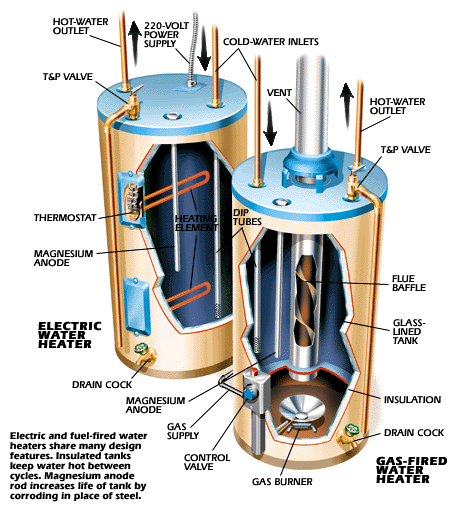STANDARD HOT WATER HEATER

Electric Water Heaters
The typical electric unit is wired to a 220-volt circuit. To heat the water, the current passes through electrical-resistance heating elements—usually two, one at the middle of the tank and one at the bottom.
Power is delivered to each element through a thermostat—a switch that senses the water temperature. When the temperature drops, the switch closes to allow current flow, and it opens when the temperature reaches its preset limit. Thermostats have a dial for setting the maximum water temperature—generally between 130 degrees and 140 degreesF, or as low as about 120 degreesF for increased energy savings and scald protection.
When a hot-water tap is opened, cold water enters the tank through the dip tube and the drop in temperature triggers the thermostat and element at the bottom. As the water at the top of the tank is replaced by cool water, the temperature at the top thermostat drops and its element kicks in. When the tap is turned off, the heating elements continue to carry current until the thermostats are satisfied.
Fuel-Fired Water Heaters
Instead of electrical-resistance elements, gas-fired heaters have a burner that's fed gas through a control valve and a thermostat switch. In an oil-fired heater, the burner is similar to that found on an oil-fired furnace. In either case, the burner is usually situated to throw a flame under the tank. The exhaust gases are vented either through a hollow core at the center of the tank or around the tank sides. Because fuel-fired heaters heat the tank, which in turn heats the water, there will be more wear and tear on the tank than with electric heat. A fuel-fired heater, therefore, may have a shorter life expectancy than an electric heater.

